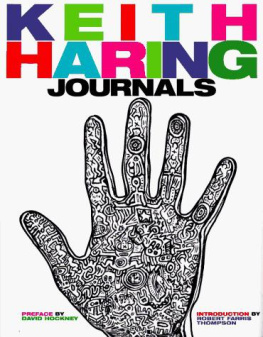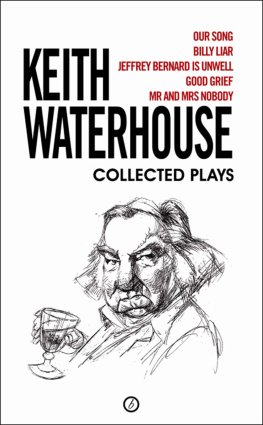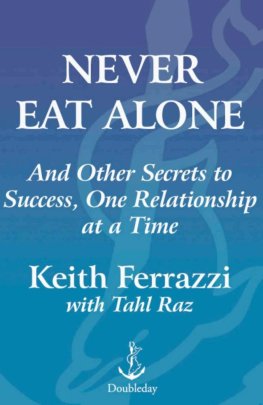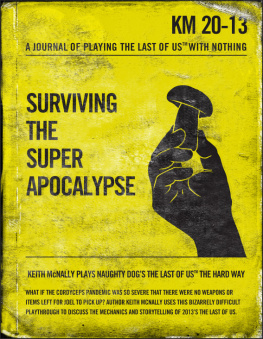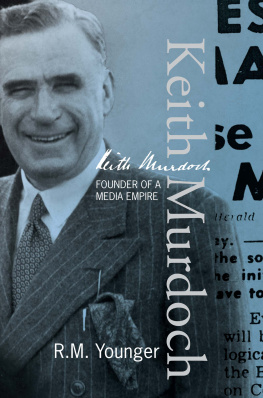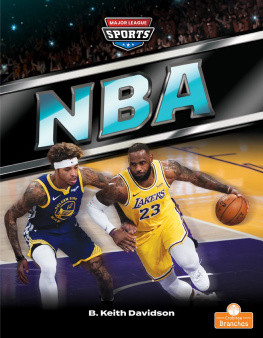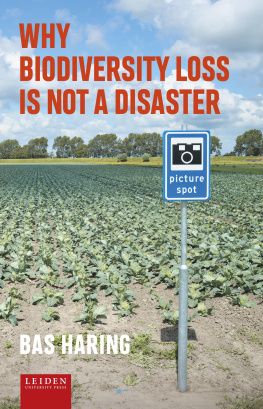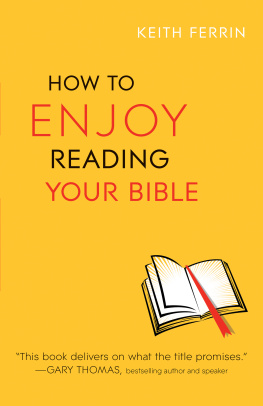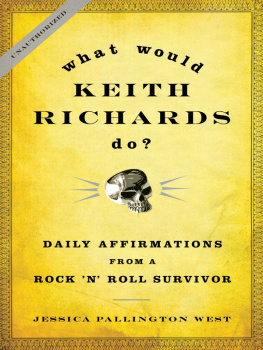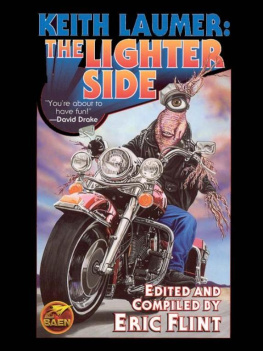Keith Haring - Keith Haring Journals
Here you can read online Keith Haring - Keith Haring Journals full text of the book (entire story) in english for free. Download pdf and epub, get meaning, cover and reviews about this ebook. publisher: Penguin Books, genre: Science. Description of the work, (preface) as well as reviews are available. Best literature library LitArk.com created for fans of good reading and offers a wide selection of genres:
Romance novel
Science fiction
Adventure
Detective
Science
History
Home and family
Prose
Art
Politics
Computer
Non-fiction
Religion
Business
Children
Humor
Choose a favorite category and find really read worthwhile books. Enjoy immersion in the world of imagination, feel the emotions of the characters or learn something new for yourself, make an fascinating discovery.
- Book:Keith Haring Journals
- Author:
- Publisher:Penguin Books
- Genre:
- Rating:5 / 5
- Favourites:Add to favourites
- Your mark:
- 100
- 1
- 2
- 3
- 4
- 5
Keith Haring Journals: summary, description and annotation
We offer to read an annotation, description, summary or preface (depends on what the author of the book "Keith Haring Journals" wrote himself). If you haven't found the necessary information about the book — write in the comments, we will try to find it.
Keith Haring Journals — read online for free the complete book (whole text) full work
Below is the text of the book, divided by pages. System saving the place of the last page read, allows you to conveniently read the book "Keith Haring Journals" online for free, without having to search again every time where you left off. Put a bookmark, and you can go to the page where you finished reading at any time.
Font size:
Interval:
Bookmark:
PENGUIN CLASSICS

DELUXE EDITION
KEITH HARING JOURNALS
KEITH HARING was born on May 4, 1958, in Reading, Pennsylvania, and was raised in nearby Kutztown, Pennsylvania. From an early age he developed an appreciation for art and cartoons like those of Dr. Seuss and Walt Disney. In 1978 Haring moved to New York City and enrolled in the School of Visual Arts (SVA), where he found a thriving alternative art community. As a student at SVA, Haring experimented with performance, video, installation, and collage, but retained his loyalty to drawing. His desire to reach a wider audience led him to create drawings in white chalk upon the blank paper panels throughout the subway system. Happy to have found such an effective medium, Haring produced hundreds of these public drawings from 1980 to 1985, sometimes creating as many as forty subway drawings in one day. Having achieved international recognition for his works, Haring also participated in gallery exhibitions, and in April 1986 opened the Pop Shop, a retail store in SoHo selling T-shirts, posters, and accessories all bearing his famous drawings. Between 1982 and 1989 he produced more than fifty public artworks in dozens of cities around the world, often for charities, hospitals, childrens day-care centers, and orphanages. The now-famous Crack is Wack mural of 1986 has become a landmark along New Yorks FDR Drive. Keith Haring died of AIDS-related complications on February 16, 1990. He was thirty-one years old.
ROBERT FARRIS THOMPSON, Master of Timothy Dwight College at Yale, has devoted his life to the serious study of the art history of the Afro-Atlantic world. His first book, Black Gods and Kings, was a close iconographic reading of the art history of the forty million Yoruba people of southwestern Nigeria. He has published texts on the structure and meaning of African dance, African Art in Motion, and a reader on the art history of the Black Americas, Flash of the Spirit, which has remained in print since its publication in 1983. Thompson has published two books on the bark cloth art of the pygmies of the Ituri Forest, plus the first international study of altars of the Black Atlantic world, Face of the Gods, and most recently Tango: The Art History of Love . In addition, he studies the art of Jos Bedia and Guillermo Kuitca and has been anthologized fifteen times. Some of his works have been translated into French, German, Flemish, and Portuguese.
SHEPHARD FAIRY is the man behind Obey Giant, the graphics that have changed the way people see art and the urban landscape. What started with an absurd sticker he created in 1989 while a student at the Rhode Island School of Design has since evolved into a worldwide street art campaign, as well as an acclaimed body of fine art. In 2003, Fairey founded Studio Number One, a creative design firm dedicated to applying his ethos at the intersection of art and enterprise. Faireys art reached a new height of prominence in 2008, when his Hope portrait of Barack Obama became the iconic image of the presidential campaign and helped inspire an unprecedented political movement.


eISBN : 978-1-101-19561-1
http://us.penguingroup.com
A NOTE ON SOURCES AND ACKNOWLEDGMENTS
It is clear from Keith Harings comments in his journals that he expected they would ultimately be read by others. He left dozens of handwritten notebooks, with line drawings, containing a wide range of materialfrom extended thoughts on work in progress to minimal notations, sketches, quotes, and reading lists. Sometimes the writing concentrated on his work, other times on relationships and the events of his daily life. As his career took off and his life became increasingly complex he wrote less frequentlyoften in the peaceful sanctuary of airplanesand there are substantial chronological gaps as a result. In some instances material he wrote for other purposes has been inserted to aid in continuity. The editing and publication of these journals was initiated and overseen by Julia Gruen and David Stark of The Keith Haring Foundation, with the assistance of editor Ellen Williams and Viking Penguin editor David Stanford. For ease of reading there are no ellipses to indicate where material has been left out. Ellipses and arrangement of material in the finished book reflect Harings own usage. Obvious errors of spelling and punctuation have been corrected throughout.
SPECIAL THANKS TO
Jeffrey Deitch Shepard Fairey Suzanne Geiss
Julia Gruen David Hockney Madonna Annelise Ream
Elda Rotor Robert Farris Thompson
SHEPARD FAIREY
Though Keith Haring died only two years after I started making street art, his art and practice had already had a profound impact on me. Haring demonstrated that one could create art on the street that differed from the more pervasive lettering-based graffiti. He also showed me that the same artists could not only affect people on the streets, they could also put their art on T-shirts and record covers, as well as have their work respected, displayed, and sold as fine art. Inspired by Keith Harings achievements, I pursued my art career with the optimism that my goals could be attained.
Anyone familiar with the career of Keith Haring knows he was a prolific artist with a distinct style that was simultaneously refined and primitive, deliberate yet lyrical and energetic. Clearly he aspired to create art with purity and integrity, but to do so in an accessible way so it could be shared with people. He was also widely known to pursue his art with a deeply personal vision, as a champion of social justice and a believer in the interconnectedness of humanity. The worlds Haring deftly navigated and the barriers he attempted to break down have been extensively noted by art critics.
However, its one thing to see an artists work and hear critical analysis, and another altogether to hear an artists own thoughts, ideas, hopes, fears, questions, and most profound philosophies in his own words. Haring, as viewed through the prism of success, cannot compare to the thoughts revealed in his journals as they follow his evolution as an artist and human being, his rise to fame, and his eventual diagnosis as HIV positive.
One of the many insights Haring shares in his journals is that fame changes peoples perceptions. In 1989, Haring wrote, People keep asking me how success has changed me. I always say that success has changed peoples responses and behavior toward me and that has affected me, but it has not really changed me. I feel the same on the inside as I did 10 years ago. Through Harings journals, one bypasses the detached academic evaluations of his work as art history and finds the artists own documentation and catharsis as he develops his identity and philosophy.
Its nothing short of remarkable how developed and sophisticated Keith Harings worldview was at a very young age. Upon arriving at the School of Visual Arts in New York in 1978 at only twenty years old, Haring begins to lay out his ideas about art and life. Harings populism is demonstrated early on, and eventually manifests in many forms. The public has a right to art and Art is for everybody are ideas that can be found in his journals from that time, and remained consistent throughout his career.
Traveling the New York subways, Haring immediately took note of the surrounding visuals. The graffiti and advertising posters seen on and around the subways influenced Haring as not only aesthetic references but also as accessible images in the public right-of-way. He engaged with the pervasive forces of advertising as repetitive and graphically engaging, and graffiti as free-spirited, fluid transgression, sometimes interacting with or commenting on the advertising. Haring illuminated his transition from an observer of these visuals to a participant, adding his own work into the negative area in ads and other spaces of opportunity in the public environment. He discusses his idea of his paintings as visual poems, with hieroglyphics or pictograms open to interpretation by the viewer. His journals provide ample evidence that the visual language he developed was not simply justified by retroactive intellectualization, but evolved from a desire to fulfill a very clear vision.
Font size:
Interval:
Bookmark:
Similar books «Keith Haring Journals»
Look at similar books to Keith Haring Journals. We have selected literature similar in name and meaning in the hope of providing readers with more options to find new, interesting, not yet read works.
Discussion, reviews of the book Keith Haring Journals and just readers' own opinions. Leave your comments, write what you think about the work, its meaning or the main characters. Specify what exactly you liked and what you didn't like, and why you think so.

